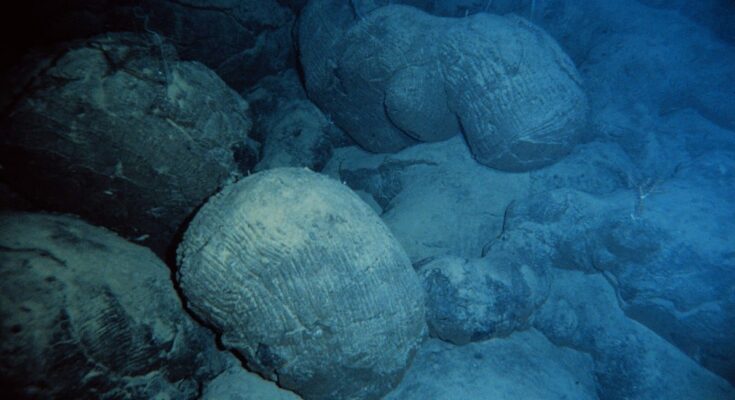In a groundbreaking expedition, scientists have drilled deep into the Atlantic Ocean, uncovering a significant piece of Earth’s hidden layers. They managed to extract a nearly continuous sample of rock, stretching 1,268 meters long, from beneath the ocean floor.
This rock, with a green, marble-like appearance, is from the Earth’s mantle, a thick layer that makes up most of our planet. The findings were published on August 8th in the journal Science.
Natsue Abe, a petrologist at the Japan Agency for Marine-Earth Science and Technology in Yokohama, expressed her surprise. She revealed that, although they had imagined what this type of rock would look like, seeing it laid out on a table was a whole other story.
Rosalind Coggon, a marine geologist at the University of Southampton in the UK, praised the expedition’s accomplishments, calling them a “fantastic landmark.” She emphasized that ocean drilling is the only way to obtain samples from deep within the Earth, which are essential for understanding how our planet was formed and how it has evolved.
For the first time, an international team of scientists recovered a long section of rocks that originated in the Earth’s mantle. This layer just below the crust is the largest part of the planet’s interior, so being able to study it up close will reveal many secrets#earthmantle pic.twitter.com/bGHEfLwm1u
— Andrew Sullivan (@SullivanNeilA) August 12, 2024
Geoscientists are concerned the study might be lengthy. This is because the International Ocean Discovery Program (IODP), which has been in operation for about a decade, is nearing its end. Additionally, the United States is retiring its main research vessel, the JOIDES Resolution.
Oceanic crust beneath seas made of basalt
Oceanic crust, found mainly beneath the seas, is composed mostly of dense volcanic rock known as basalt. Unlike thicker and older continental crust, oceanic crust is much thinner and relatively younger, as it is constantly recycled by the movement of tectonic plates, according to Nature.
Basalt is formed when magma rises through cracks under the sea along structures known as mid-oceanic ridges. The magma comes from the mantle, which is mostly composed of green, magnesium-rich minerals.
As the mantle material moves upward, the pressure decreases, causing some of these minerals to melt. This melting forms tiny amounts of magma between the rock crystals.
Typically, only magma reaches the sea floor, but, at certain locations, mantle rock also surfaces. When this rock comes into contact with seawater, it undergoes a reaction called serpentinization. The process changes the rock’s structure, making it appear marble-like, and releases substances such as hydrogen.
In May 2023, the research ship JOIDES Resolution visited a site where this very process occurs. the Atlantis Massif, an undersea mountain located just west of the Atlantic’s mid-ocean ridge.
The ship, which is 143 meters long, is equipped with a 62-meter-tall crane specifically designed for undersea drilling.



